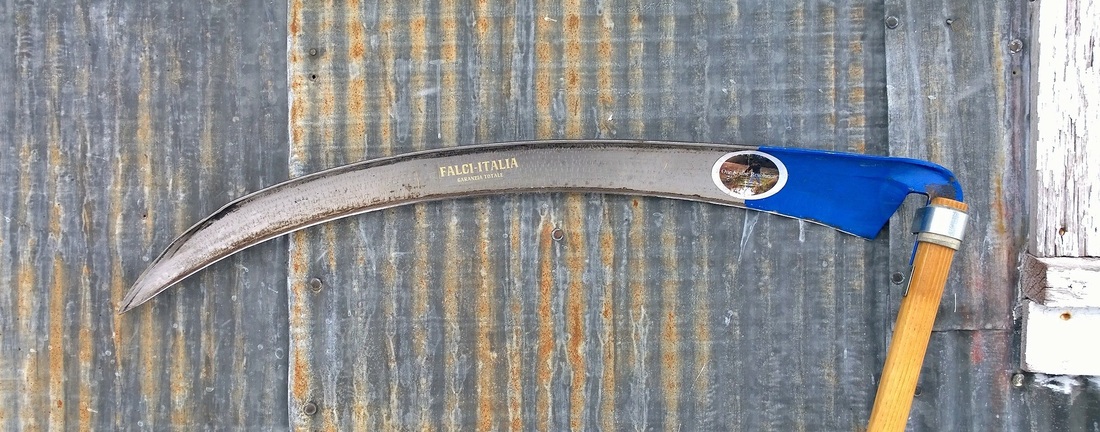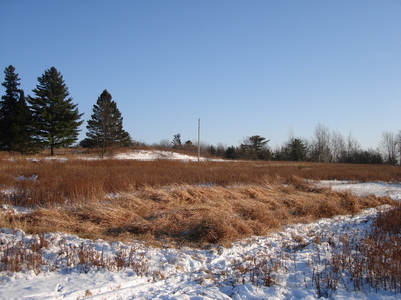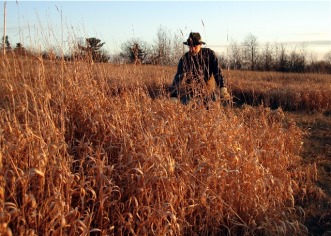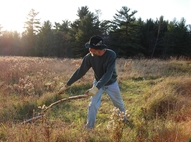|
1SR Falci 100, in "Botan Blue", 85cm, 50mm wide, 603g, This blade has a fully-formed belly and rocker, to handle bumpier fields, like my favorite Penn. Dutch Redtenbacher blade. I asked Falci to reproduce my favorite Redtenbacher blade in 85cm, and they said there was no need to. This one is similar, they said, and will probably mow better! So there you go. This blade is awesome. A strong, stiff, well-formed, and balanced blade. The form of the blade is more like a cross between my Gartensense blades and the FUX 2010 or Profisense. It doesn't have as much of a hook in front, as the 2010, making it easier for beginners to use, and requires less twisting of the torso in the full field stroke, which I prefer. I like using a lot of lateral motion in my scythe stroke. Only double peened, but to a thinly tapered bevel that runs easily over the nail, in the thumbnail test. I finally got to really put it through it's paces this fall, and shoot some video of it in action. See the three videos below:
1 Comment
Baby, it was cold outside! 15 degrees F and breezy! Hence my yeti hat. The snow at the base of the grass, had fallen as wet snow on a warmer day, so it had frozen to be quite firm, and added a lot more resistance to each scythe stroke. So at 2:38 you can see how I really have to put my weight into each stroke. It was also too cold for a wet whetstone, so I just used it dry to hone the blade. I use the reed canary grass for straw bedding in my goose house.
I've been mowing my reed canary grass for straw, the past couple of days. If the snow is not too deep, and the grass is still upright, you can mow even in winter, with a scythe. This grass makes a great straw bedding for my geese. Don't put your scythes away for the season just yet! Now is a great time of year to mow tall dry grasses for use as animal bedding, garden mulch, or dry matter for compost piles. Reed Canary grass is my favorite dry grass. It's easy to mow and yields a tremendous volume of straw. At this time of year, the seeds have all fallen off, and since it's a dominant monoculture, there aren't many other plants mixed in, so it makes a great seed-free mulch. When harvested in dry weather, it requires no further drying, and you can put it directly in a haystack, or pile it high in your barn or chicken coop for winter bedding. The big hollow stems are great for keeping air in a compost pile. So after you use it for bedding, the manure and straw mix is very compostable. It doesn't form a dense anaerobic mass (like hay or leaves do), that takes forever to break down. The video below shows how I mow Reed Canary Grass: This next video shows how we bring the Reed Canary grass straw in from the field. I don't have a real barn here yet, so I store the straw on my Pyramid Haystack frame next to my goose house, and cover it with a tarp. In the winter, it's easy to take off the tarp, and pull off as much straw as I need for bedding at a time for my geese, and then cover the stack back up again. |
Botan AndersonArchives
March 2023
Categories
All
|




 RSS Feed
RSS Feed